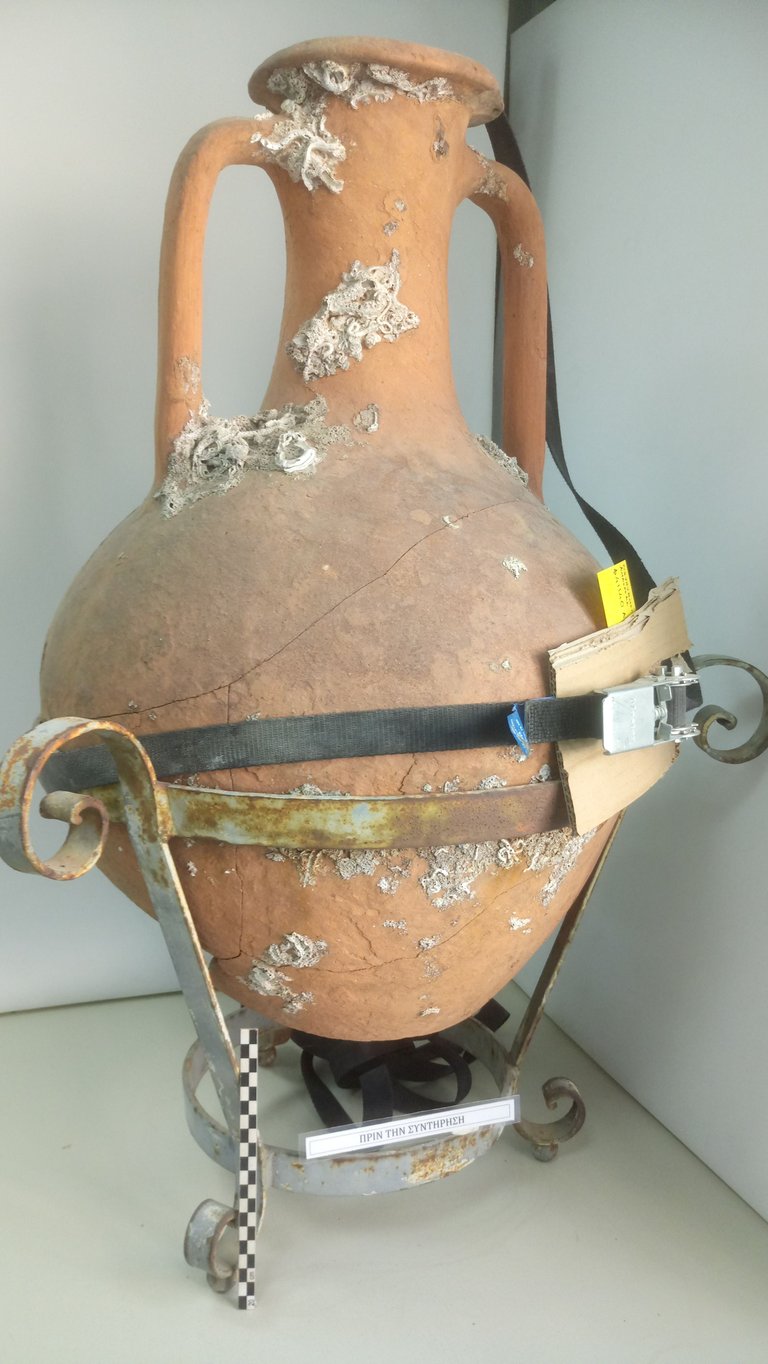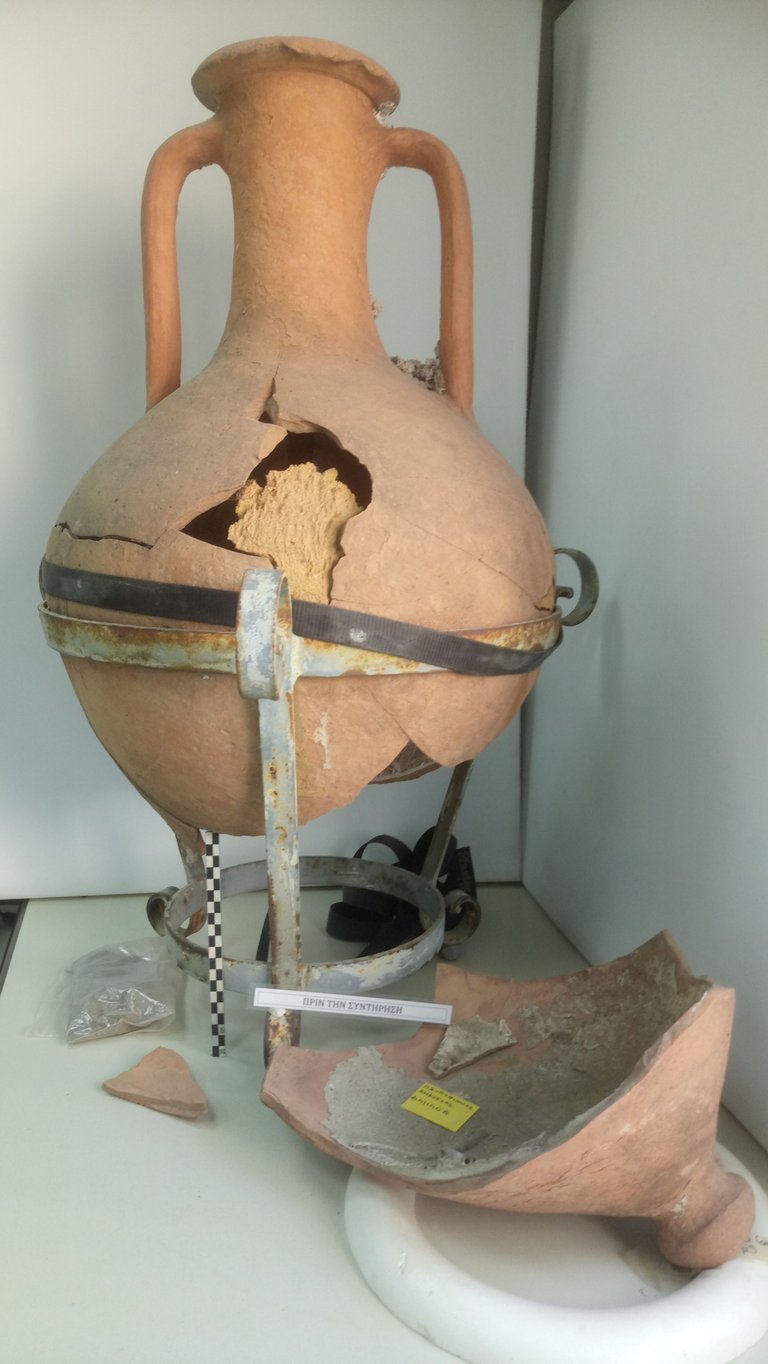This amphora type ceramic was discovered in an underwater excavation in the athens port dating back to 1500-2000 bc,this type of ceramic is very simple it was used for storing water,there is no coating or colouring or some kind of decoration found, as you can see there has been a calsific infection by some organism ( this degree of extection tells as that its been for centuries in the sea floor).First we study and record everything about the object before we start making acts.There has been a previous restoration in which the previous restorer had joined together the fractures with a very pour in quality and nonereversable glue which we had to remove (with acetone solution and lancet) and free all the fractures before we start doing any restoration ( 9 fractures in total),the previous restorer also putted inside the objest some kind of coating which we also removed (there are many cases of objects having badly restored in the past and thats due to the fact that restoration is a science that is recenty(the last 30 years) evolved and studed furtherly and is constantly evolving and discovering newer and better methodes and materials to use).After we remove the inside coating we remove the pulverized ceramic with a brush and we start stabilizing the surface which is very brittle and unscrambled due to the action of insulable salts and the surface tension with paraloid(form of reversable gleu used in conservation).After that, we leave it to evaporate and react,next we will join the peices together with cianoacrilice glue and we will fullfile the missing parts if there is any with plaster .The object will be exposed after the conservation procedures with other ceramic objects of that period
Sort: Trending
